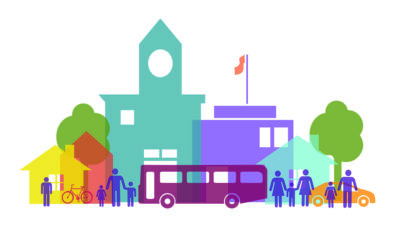
This conference report provides an overview of the discussions that took place at this conference, including:
- Lessons shared by experienced place-based funders;
- Key challenges and tensions that arise in place-based grantmaking;
- Participants’ learnings and takeaways from the conference discussions; and
ways to support grantmakers to improve the practice of place-based grantmaking.
Download the report and the accompanying resource guide.
Dive deeper with video of conference sessions.
Read the blog post.
Report Summary
“Place-based” initiatives, which 20 years ago may have been called “comprehensive community initiatives,” bring much-needed resources to struggling communities. These grantmaking strategies seek to improve the lives of residents in neighborhoods experiencing entrenched, intergenerational poverty, racial discrimination and profiling, and disparities in education, income, criminal justice, health, housing and other areas.
Yet these initiatives may have unforeseen and sometimes unplanned consequences for the communities selected as sites of place-based initiatives.
In plenaries and breakout sessions, funders from around the country discussed their experiences and challenges with place-based grantmaking. Participants listened to case studies from West Oakland to Minneapolis to the Deep South, discussed the differences between funding in urban and rural “places,” and heard the varied perspectives of national funders and local funders – all while sharing lessons learned and posing hard questions about what needs to change in order to make place-based grantmaking more effective.
Key takeaways for grantmakers include:
Make the shift from being a grantmaker to a changemaker and co-learner. Changemakers are people who can inspire a trusting relationship despite the power imbalance inherent in the grantee-funder relationship. To be a changemaker, program officers must be co-learners with those doing work on the ground rather than coming with the answers. They should be trusted outsiders who can bring the knowledge from the community back to the foundation.
Resource community engagement and collaboration. Change needs to be resident-driven. It is not enough to just provide project grants. The foundation must also deploy resources to ensure that residents are involved in the process.

Make a long-term commitment. Consistent funding allows foundations to experiment and try new things. Staying a long time allows you to gain greater perspective on the place, learn what the community wants, and avoid making incorrect assumptions. Long-term commitment makes deep collaboration possible.
Coordinate multiple funders working in the same place. Funder alignment and coordination can significantly ease burdens on community groups, for example by developing common learning metrics. Coordinating funder efforts also creates the potential to multiply the impacts of their investments in the same place.
Co-invest in good work that is already happening or emerging from community partners. Don’t force collaborations. Rather than coming with the issues, figure out with the community what would make a big impact and build on what is ripe there. Rather than branding and running a big initiative, foundations can make an impact by joining efforts on the ground as a partner – even with a modest investment.
Leverage the foundation’s name and status to increase visibility and access of partners on the ground. Foundations engaged in place-based work can do much more than just funding – for example developing relationships, positioning community partners in a way that is influential, and engaging in policy advocacy. Related to this is the tremendous convener role that foundations can play, using their clout to bring leaders from different sectors, such as government, business and academia, to the table in support of support community-driven agendas.
Learn as you go and be open to different pathways to success. Often in place-based work, the outcomes that have been most successful were unplanned and unforeseen. They arose from long-term relationship building and the development of new leadership that didn’t exist in the beginning.
Conference Sponsors
Sponsors of this conference: Open Society Foundations; Jacobs Center for Neighborhood Innovation; John T. Gorman Foundation; Lumina Foundation; Annie E. Casey Foundation; Youth Transition Funders Group; The JPB Foundation; The California Endowment; and Knight Foundation.
Join a Learning Community
NFG’s Democratizing Development Program (DDP) builds the capacity of philanthropic institutions to support low-income and communities of color who have been oppressed and disadvantaged by historical profit-based and exclusionary development practices. DDP leverages NFG’s network and field leaders to harness innovative solutions that increase and strategically leverage philanthropic resources for more inclusive, community-led and equitable approaches to development. To learn more about the Democratizing Development Program, contact Nile K. Malloy, Senior Program Manager at Neighborhood Funder’s Group: nile@nfg.org.
The Forum for Community Solutions supports community collaboration – including collective impact – that enables communities to effectively address their most pressing challenges. As part of this work, in partnership with FSG, AFCS co-hosts the Collective Impact Forum, an online community for those practicing collective impact to find the tools, resources, and advice they need. It’s a network of individuals coming together to share experience and knowledge to accelerate the effectiveness and adoption of collective impact. Please visit www.collectiveimpactforum.org to learn more.
